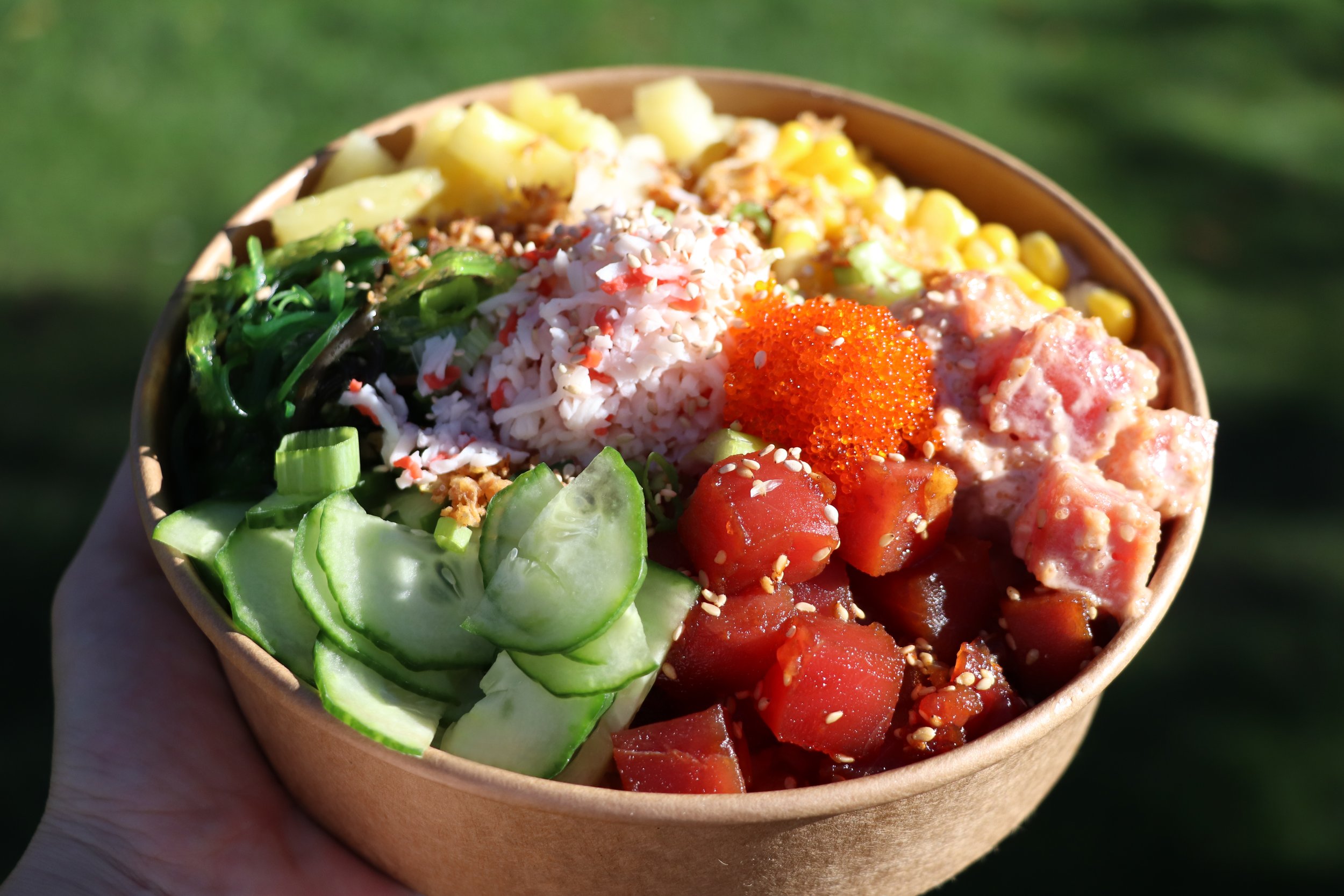HOW TO EAT POKÉ USING THESE SIMPLE CHOPSTICK TIPS
When you get the best poke in Vancouver, you’ll often be given the option to eat it with chopsticks. That’s why Vancouver residents go through hundreds of thousands of sets of chopsticks a year!
Nevertheless, for as many as 80% of us, that’s an intimidating prospect. After all, in the US and Canada, nearly seven out of ten people say they are at best “not very good” at using chopsticks.
The good news is: if you follow a few simple chopstick tips, you can become comfortable using them in no time.
The Quickest Tips For Chopstick Success
The ingredients vary between poke bowl recipes. Yet most of them follow a few rules for what poke is. Those rules can make a big difference to your experience eating poke with chopsticks.
For instance, whether you order a tuna poke bowl or a less-traditional alternative, the seafood is always pre-cut into bite-sized pieces. There is also almost always rice — usually, but not always, sushi rice. Lastly, the fish or seafood is always tossed in poke bowl sauce.
These are important features. In the right combination, they make the best poke in Vancouver easier to eat with chopsticks. The ingredients stick together well and won’t fall apart when you pick them up.
Chopstick Tip 1: Be flexible
There are bound to be many different types of poke near you. You may find chopsticks harder to use for some of them
That includes any poke bowl recipe that uses a sticky/sushi rice substitute like long grain rice, brown rice, quinoa, or farro. In these cases, it may be more difficult to keep each bite of poke from falling apart. That’s why, if you choose an alternate grain, you make sure that your poke bowl sauce is on the stickier side (like one made with honey) so it can bind each bite together better.
Chopstick Tip 2: Get a (good) grip
Even if you don’t order traditional ahi poke (so you’re faced with unusual ingredients), you should always at least try to use your chopsticks the traditional way. People have been eating with chopsticks for thousands of years, so the current practice has been perfected across generations.
Start with the bottom chopstick and work up
How you position and use the bottom stick is the most important part of eating the best poke in the Pacific with chopsticks. The steps to proper placement are pretty simple:
Make an “L” with the thumb and pointer finger of your dominant hand
Rest the chopstick on the webbing between your thumb and pointer finger, then close your thumb against your hand to hold it in place;
Rotate the chopstick so it also rests against the top-inside of your ring finger (you’ll have to bend it a bit).
Using the bottom chopstick is fairly simple, too: just don’t move it!
Don’t force it
Once you have the bottom chopstick in place, holding the top stick wrong becomes difficult. Just lightly pinch it between your thumb, pointer finger, and middle finger, similar to how you hold a pencil. When you’re not picking anything up, you can rest the pad of your middle finger (where your fingerprint is) on the bottom stick.
While this positioning may feel odd to you in the sense that it is unfamiliar, it shouldn’t be uncomfortable.
Chopstick Tip 3: Limit how many fingers you let move
The secret to being able to eat poke with chopsticks (or anything else) is to only move your pointer and middle fingers. Your thumb, especially, should always stay still.
Your pointer and middle finger should move together — staying in the same position relative to each other — as you move the top chopstick to pinch the tips together and move them apart.
[Feeling confused? Check out this visual guide to the proper way to hold chopsticks]
Chopstick Tip 4: Don’t get frustrated!
When visiting any poke bar near you — especially if it is one of the best poke restaurants in town — the most important thing is to enjoy your poke.
That’s why our last tip is also the most important. As you learn to use chopsticks to eat your poke, you’ll find what works best for you (and your poke). You may like to hold the chopsticks closer to either end, rather than the middle. Or you may prefer to lift your bowl a little so the distance to your mouth is shorter.
Those modifications are both well within the guidelines for chopstick etiquette. That said, many of our go-to actions when we’re frustrated with chopsticks, like spearing food, are definitely not.

